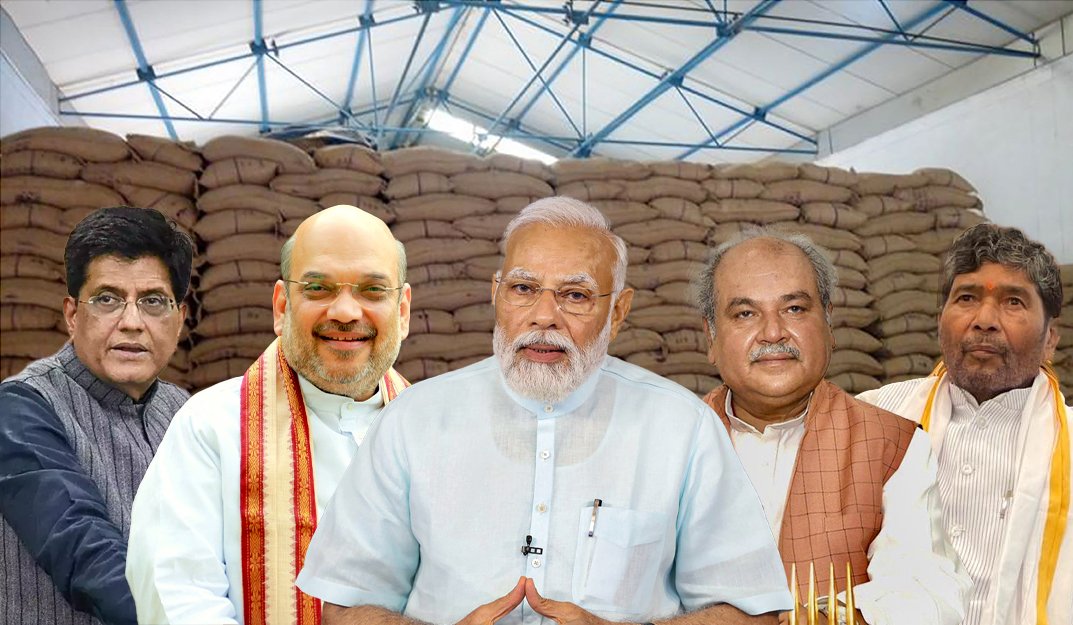The Indian government has recently approved a groundbreaking scheme worth Rs 1 lakh crore aimed at significantly expanding the foodgrain storage capacity in the cooperative sector. With the current grain storage capacity at approximately 1,450 lakh tonnes, this initiative seeks to add 700 lakh tonnes of storage over the next five years, eventually reaching a total capacity of 2,150 lakh tonnes. Information and Broadcasting Minister Anurag Singh Thakur has hailed this scheme as the “world’s largest foodgrain storage programme” in the cooperative sector.
Addressing Storage Challenges
One of the primary goals of this scheme is to address the challenges associated with inadequate storage facilities, which often lead to spoilage and distress sales of food grains by farmers. By constructing godowns with a capacity of 2,000 tonnes in every block across the country, the government aims to reduce damage to food grains caused by the lack of proper storage infrastructure.
Buy Prime Test Series for all Banking, SSC, Insurance & other exams
Empowering the Inter-Ministerial Committee
To ensure the effective implementation of the scheme, an inter-ministerial committee will be established. This committee will facilitate coordination between various ministries, including the Ministry of Agriculture and Farmers Welfare, Ministry of Consumer Affairs, Food and Public Distribution, and Ministry of Food Processing Industries. By converging the efforts of these ministries, the government aims to optimize the storage plan in the cooperative sector.
Boosting Food Security and Rural Employment
The scheme is expected to have several significant benefits for the agricultural sector and rural India as a whole. Firstly, by increasing storage capacity, it will reduce transportation costs for farmers, enabling them to maximize their profits. Additionally, strengthening food security is a crucial objective of this scheme, as it will ensure a more stable and consistent supply of food grains across the country. This, in turn, will reduce India’s dependence on food grain imports.
Furthermore, the expansion of storage facilities will create numerous employment opportunities in rural areas. The construction of godowns and the subsequent management and maintenance of these facilities will generate jobs and contribute to the economic development of rural communities.
Tackling Production and Storage Discrepancy
India is one of the world’s largest foodgrain producers, with an annual production of about 3,100 lakh tonnes. However, the existing storage infrastructure can only accommodate approximately 47 percent of the total produce. This leads to post-harvest losses and hampers the efforts to maintain an optimal buffer stock. The new scheme aims to bridge this production and storage gap by significantly increasing storage capacity and reducing wastage.
Also Read:
- Mission Karmayogi: Annual Capacity Building Plan by MoHFW
- NEP SAARTHI and NEP 2020: A Transformative Vision for India’s Education System
- Unlocking Financial Freedom: An Insight into the Liberalized Remittance Scheme (LRS)
- Pradhan Mantri Matsya Sampada Yojana: Revolutionizing India’s Fisheries and Aquaculture Sector




 Weekly One Liners 15th to 21st of Decemb...
Weekly One Liners 15th to 21st of Decemb...
 World Basketball Day 2025 Celebrates Bas...
World Basketball Day 2025 Celebrates Bas...
 UN Celebrates Second World Meditation Da...
UN Celebrates Second World Meditation Da...







